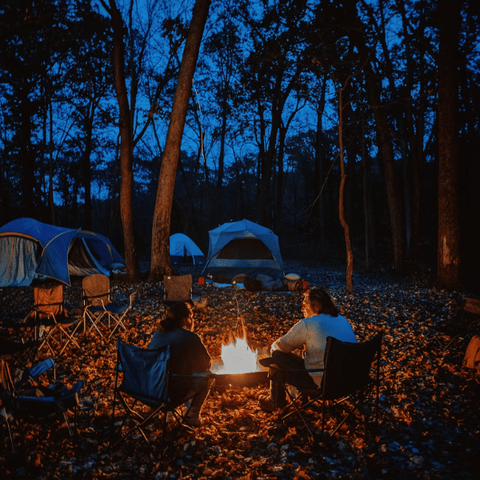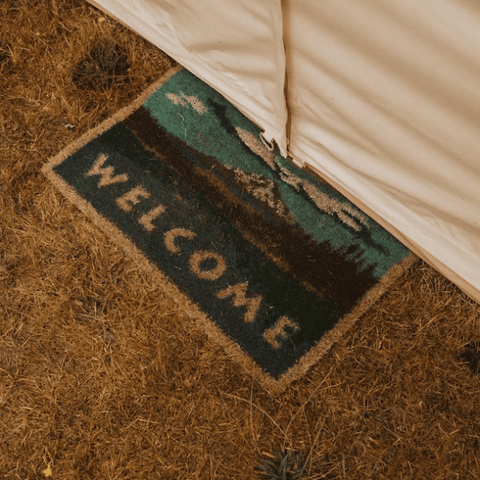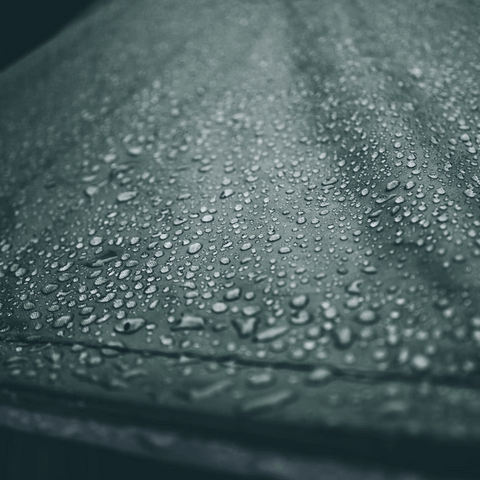LIVRAISON GRATUITE
Menu
-
- Boutique
- Tentes de camping
- Wall Tents
- Tente en toile
- Tentes cloches
- Tentes de festival
- Tentes de chasse
- Tentes Yourtes
- Tentes familiales
- Tente d'observation des étoiles
- Tentes cabanes
- Cadeaux de camping
- Tentes terrestres
- Poêles de tente
- Tente 4 personnes
- 6 Person Tents
- Tente 8 personnes
- 12 Person Tents
- Tente 6 personnes
- Équipement de camping
- Camping Chairs
- Shade Canopy Tents
- Camping Fans
- Prestations de service
- À propos
- Contact Us
- Reviews
-
- Connexion

Free Shipping

Pay No Sales Tax
30-Month Warranty
LIVRAISON GRATUITE
Tentes
À propos
Boutique


La liste LiT
Idées de glamping et de camping + ressources
How to Care for a Family Camping Tent
5 lire la lecture
Camping trips are a wonderful way to spend time outdoors with family and teach young ones how to appreciate nature. And a family camping tent is an essential piece of gear to make that happen, to carry on the tradition season after season, year after year. But to make the investment last a lifetime requires proper care and maintenance. How do you care for a family camping tent? Read on for our best tips.
Pitch Your Family Camping Tent Properly
It’s important to allow yourself time to set up and take down your family camping tent. Rushing to pitch a tent or take it down after a camping trip can result in damaged parts and improper care.
Find the Right Foundation
When you pitch a family camping tent, for example, take time to find a flat foundation that is free from debris. Clear the space of sharp or hard objects, such as rocks, sticks and pinecones, ensuring that your family camping tent’s base isn’t susceptible to tears or abrasions. A footprint or ground tarp is also a smart accessory to invest in, adding an extra layer of protection and keeping out condensation and moisture that tends to creep in from the earth.
Follow Instructions
When pitching a family camping tent for the first time, be sure to follow the manufacturer’s instructions. Even if it feels self-explanatory, the instructions might steer you toward the correct order of operations, which can prevent any extra strain against poles, seams, or the tent material itself. Not to mention, a properly pitched tent will create a taught surface to shed rain.
Mind the Poles and Stakes
Poles and stakes can easily get damaged when pitching a tent. As mentioned, a proper setup can minimize the stress on poles and pole segments. Also, make sure that poles are connected securely and inserted correctly before bending them into place or raising your tent.
When pitching or taking down, prevent the poles from banging into one another as this tends to compromise them in the long run. Upon disassembling, take care to not cause tension along any internal shock cords too.
Take Care of Zippers, Snaps, and Smaller Features
Lastly, be a bit more mindful of the smaller features of your family camping tent. Forcing open a door or window is an easy way to snag a zipper, which could result in a tent that is exposed to the elements until it’s fixed. Be patient with snaps too.
Safely Distance Your Family Camping Tent From Fire

Campfires are part of the family camping experience. Showing kids how to make s’mores and telling stories or playing games around a bonfire is part of what makes a family camping trip memorable and special. But it’s crucial to keep a safe distance from flames, hot wood stoves, and campfires – both your family and your family camping tent!
Bonfires
Give yourself some distance from fire pits when choosing where to pitch your tent. According to the National Park Service, you should give your tent, gear (and anything flammable, really) at least 15 feet of space from a campfire. If you have the option, another cautionary step is to position your family camping tent upwind. Together, these family camping tent care tips will ensure that sparks and embers get nowhere near your tent or cause damage.
Hot Wood Stoves
If you have a family camping tent that is compatible with a wood-burning stove, it’s still important to stay vigilant. Take time to learn safety tips for your wood burning stove, like being mindful of carbon monoxide poisoning and simply installing the wood stove correctly.
Fire Extinguishers
Always keep a fire extinguisher on hand. Sure, you can follow the sage advice of many park rangers and have water to douse the fire and coals, especially when before heading to bed. But you never know what might spread. Wind could pick up and reach your tent, or a hammock hanging nearby. And a fire extinguisher is the best way to put out flames before it spreads.
Clean and Dry Your Family Camping Tent Before Storage

Somewhere between takedown and packing up, take some time to clean your family camping tent. With a soft-bristled brush, broom and dustpan, sweep out the interior and dust off any leaves or dirt that accumulated on the exterior. If you find any stains – spilt take a gentle cloth and wipe it up. Take a toothbrush to each zipper’s metal slider to remove sand or grit.
Packing away your family camping tent only once it’s good and dry is ideal, of course. But sometimes, we just can’t control the weather. If you find yourself in this predicament and have to pack up camp in the rain or your tent hasn’t dried out yet, don’t fret! Instead, just remember to unfold it and dry it out – from stakes to poles – when you get home. Pitching your tent and letting it breathe will prevent it from getting musty-smelling and developing mold and mildew.
Keeping your tent clean and dry from the get-go helps minimize your efforts when you’re ready to hit the road. Here are some extra tips to make cleaning your family camping tent a cinch:
- Throw down a doormat: Place a doormat or small carpet at the entrance to wipe off your feet before entering the tent.
- Use a rainfly: A specialized rainfly stretched tight over a tent can help keep it clean and dry. A rainfly works rather well when you need to find shade under trees but want to keep off pollen, leaves, and other debris.
- Eat and store food outside: Keep crumbs and spills to a minimum by designating a cooking and dining space outside the tent.
Pitch Your Family Camping Tent In Shade
Speaking of a rainfly, it’s not a bad idea to have one around anyway. Especially to protect your tent from the sun’s UV rays. Prolonged sun exposure can harm a family camping tent over time, deteriorating the materials. Whether your tent is made of nylon or canvas, the fabric can fade and even break down. Sometimes, poles can become brittle and break. So do your tent a favor and give it some extra protection from sun damage.
The same goes for your tent’s storage. Between trips and camping season, make it good practice to store your tent in a relatively climate-controlled space, away from direct sunlight. Depending on where you live, a hot attic or garage might even be too much for your tent, harming its durability.
Inspect Your Family Camping Tent for Repairs

One of the best ways to care for a family camping tent and prolong its life is to take time for necessary repairs. Make a habit of giving your tent a routine inspection at the start and end of each camping season, and even camping trip. Conducting a once-over for general wear and tear and addressing them (before you forget) is a good habit to get into.
Keeping a repair kit on hand at a campsite is beneficial, allowing you to quickly patch small tears that could eventually turn into something larger, and harm the integrity of your tent.
Some tent repair kit essentials could be:
- Extra patches of nylon or canvas
- Needle and thread (for canvas)
- Waterproof seam sealant
- Tent pole repair sleeve for broken poles
- Duct tape
- Camping lantern
- Paracording or extra guy lines
- Extra tent stakes
- Tent zippers and sliders
- Spare buckles and clips
- Multi-tool for repairs
- Small scissors
Care For Your Tent and It’ll Take Care of You
When you learn how to care for a family camping tent, it can last for many adventures. Moreover, take steps to properly pitch your tent and preserve it with careful cleaning and storage, you ensure it not only takes care of you but your entire family. Sleeping out in the wilderness requires shelter and the tent is the most essential piece of camping gear you need. But when you care and maintain your tent as well as you do a house, it will feel more like a shelter. It will feel like home.
Related Resources

LA LISTE ÉCLAIRÉE 2 lire la lecture
Idées de camping dans la cour avec des enfants pendant le COVID-19
Le camping familial pendant le coronavirus peut être tout aussi une aventure que le camping dans l
LA LISTE ÉCLAIRÉE 4 lire la lecture
Can Glamping Businesses Survive a Recession?
Examining the Resilience of Luxury Camping Businesses Glamping, the luxurious cousin of traditional Blogues populaires
1. Qu’est-ce que le Glamping ?
2. Comment démarrer une entreprise de glamping
3. Créez une plate-forme de tente cloche
4. Les meilleures toilettes portables pour le camping
5. Comment installer et plier une tente cloche
6. Les meilleurs poêles de tente à cloche – Façons de chauffer une tente en toile
Produits populaires
S'abonner
Inscrivez-vous pour recevoir les dernières nouvelles sur les ventes, les nouveautés et les conseils
DEVENEZ UN INITIÉ
Nous partagerons périodiquement avec vous des idées, des sorties de tentes cloches, des offres spéciales et des notifications d'événements.


